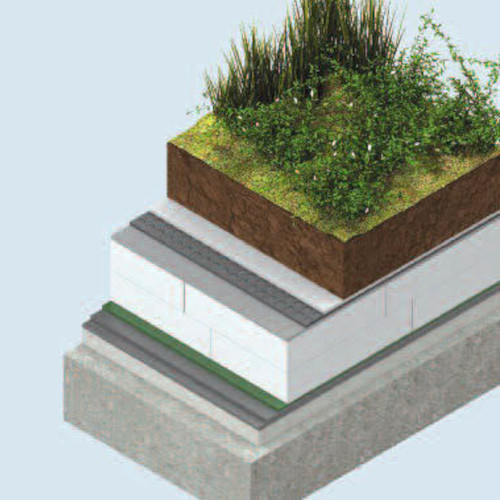Pairing Up Bioclimatic Architecture and Thermal Insulation
When Nature Gets Generous – Use It!
If you are planning on building a home and need some practical ideas regarding the construction materials, position an orientation or insulation of your new home, why not turn to nature and see what it has to offer in order of making your home more functional and, what is even more important, more energy efficient. There has been a lot of talk about problems with high energy consumption all over the world and all the negative consequences and risks such consumption imposes, including all the environmental issues. This is why we have come up with an idea of pairing up bioclimatic architecture and thermal insulation and we will show you how.
What Is Bioclimatic Design and How It Works
Bioclimatic design or bioclimatic architecture actually refers to method of construction that is connected with nature through many different aspects, all leading to decreased energy consumption by using natural power sources, such as the sun, wind and water. It is often connected to the so called passive solar design which refers to the use of natural sources but without any mechanical devices. The term we are discussing here is however more general and includes all the methods and techniques that should be combined and lead to energy savings by decreasing energy consumption through insulation and use of natural energy sources.
Some basic concepts that should be included in the design are as follows:
- Apart from the aforementioned passive solar systems, there are also active solar systems that use mechanical and electrical devices to collect and convert energy gathered from natural sources.
- The question of energy consumption is also connected to the matter of sustainability and environmental protection, why sustainable architecture is another term worth mentioning. It refers to preserving and protecting the environment in each and every phase of construction through:
- the use of eco-friendly construction materials;
- applying construction methods that will leave no toxic waste nor emit harmful gasses;
- choosing the most adequate location and position of the building;
- using recyclable materials that can be put to a good use once the building has served its purpose and is being demolished.
- Bioclimatic architecture also incorporates the use of renewable energy i.e. the energy coming from natural sources such as using solar radiation for cooling and heating, using wind or water to produce energy or using natural components as fuel, such as biomass.
- Another important concept is the so called self-sufficient house which is basically a home that does not use centralized supply systems but relies only on natural resources such as using energy and electricity from the sun or wind, using water from rainwater or wells etc.
In order of fully incorporating bioclimatic design and insulation, you should rely on a few basic concepts:
-
Firstly, it is important to take this design into account from the planning phase and incorporate it through the position of the building, especially the openings (windows and doors) which should preferably face south in order of collecting the heat during wintertime and using natural daylight for lighting throughout the year.
-
As heating is important during the winter, cooling is also important during summertime why proper shading and the use of some simple tricks can be more than useful, such as use reflective materials and colours.
-
Another thing worth considering is the thermal mass of the building and why not use it to your advantage. Namely, you can use natural means of ventilation to remove all the excessive heat that has been collecting during the summer and thus regulate the temperature without the use of cooling devices.
-
Finally, the building envelope is of great importance why it should be properly treated with insulation which will provide not only additional comfort during both summer and winter time, but also contribute to airtightness of the building
How to Incorporate Insulation into Bioclimatic Design
Now, it is time to discuss the other integral part of bioclimatic architecture – insulation. Please note that properly chosen insulation material can drastically decrease energy consumption and contribute to environmental protection. If you are interested in how to best combine these two, then try choosing some eco-friendly insulation materials which are now quite common in the insulation markets. Namely, more time is now invested into creating materials that will not lose their efficiency but also will not be dangerous for the environment. Here, the entire life span of a material in question is taken into account i.e. the energy it uses to be produced is levelled to the energy it saves during its life cycle.
As aforementioned, a thing that deserves special attention is the building envelope which should be properly insulated. Here, insulation manufacturers have designed complex and very effective exterior insulation systems that will provide all the protection your building needs. These systems include a number of layers that are designed to take care of each detail, from airtightness, heat gain and loss, as well as the aesthetics of the building facade.

Another great way of incorporating insulation into the bioclimatic design is through green roofs. Although these are more often seen in rural rather than urban areas, they are growing more and more popular due to all their positive effects. Apart from the fact that green roofs are very aesthetically pleasing, they are also acting as noise barriers due to the natural growth that can be of different kinds, volumes and intensities. One of integral layers of green roofs is proper insulation (usually some type of rigid insulation) which is used as protection for the roof membrane. Please note that although natural growth can offer a level of insulation, additional insulation material is often imposed by applicable building codes and should not be disregarded.
Improve your home insulation with our high-quality insulation products. Call us today, visit our online store or contact us for assistance by email.























































































































